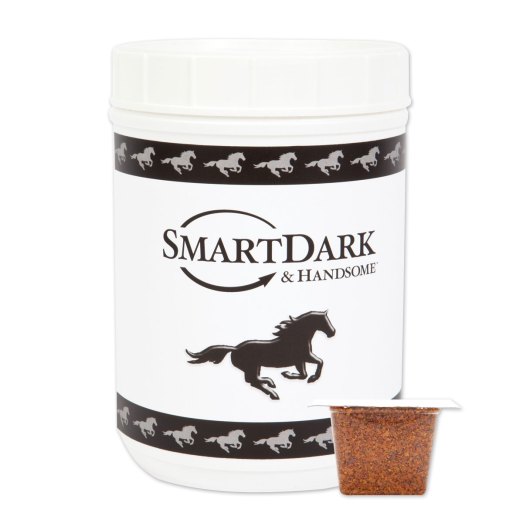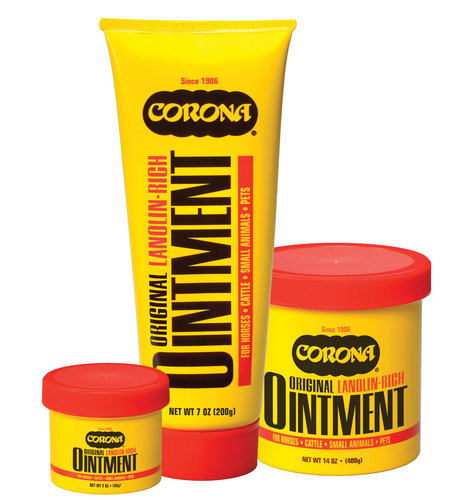It’s never a good feeling for you as an owner to look at your horse and think, How did he get to be that skinny? If you’ve got a hard keeper, a lot of time and money is spent on making sure he keeps a healthy weight. But what if your horse has never been a hard keeper and suddenly begins to lose weight? That can be a frustrating, even scary feeling. Take a step back and consider some of these possibilities and options for helping you four-legged friend pack on the pounds:
- If he gets grain, is he getting enough? Make sure that you check the bag of the grain that your horse is getting. Any reputable brand of horse grain will have a feeding chart on the back for how much to feed based on weight and activity level. If you are trying to put on weight, feed the high end of the recommended amount.
- Is his hay or pasture high-quality? Is the hay that your horse is eating high quality? You can have your hay tested to make sure that the nutrients he needs are present. Sometimes even hay that looks like it is high quality is lacking in nutrition and some hay that doesn’t look so great to us will give your horse everything he needs. For more information on testing forage quality, try the National Forage Testing Association. Also, if your horse is in a pasture all day or most of the day, just because he’s happily eating lovely emerald green grass doesn’t necessarily mean that he is getting all the nutrients he should. If you are concerned about his overall vitamin and mineral intake, try a basic nutrition supplement like Accel, Red Cell, Grand Vite, or Missing Link.
- Have you tried a weight supplement? It could be that you just got lucky enough to have a particularly hard keeper. If he is getting the highest recommended dose of grain and his hay/pasture is high-quality and he’s still not as fat as you’d like, try adding a weight supplement. Certain breeds tend to be harder keepers than others. Thoroughbreds and American Saddlebreds are two examples of breeds in which hard keepers are not uncommon. Also, sometimes as horses age, they can become harder keepers so think about how old your horse is when you are trying to assess the reason for his weight loss. If you are looking for a decent weight supplement, try Weight Builder, Fat-Cat, or SmartGain 4. If you don’t want to supplement with a manufactured product, try adding Beet Pulp to your horse’s diet. It is high-fiber and helps digestion and is often helpful in putting weight on.
- When was the last time his teeth were floated? Horses do not chew the same way that we do. Humans have a chomping, up & down motion when we chew. Horses grind their jaw more side to side to pulverize their food. This is fine except that their lower teeth are narrow than their upper teeth and therefore, when they grind, they do not wear down their teeth evenly. Sharp points can form on the teeth and making eating more difficult and even painful. How do you know if your horse might need his teeth floated? Watch him eat. Does he drop a lot of food out of his mouth as he is eating? This could mean that his teeth are not even and he can’t chew properly. Also, is he not eating as much? If it is painful or difficult to eat, he might not have as much desire to try. Ultimately, talk to your vet and get a professional opinion about the quality of your horse’s teeth. If this is the cause of his weight loss, you will see improvement in his weight within a month or two after floating the teeth.
- When was the last time you dewormed him? If, in addition to be a bit on the thin side, your horse is also rubbing his tail and/or looks a little dull-coated, he could need to be dewormed. My experience with the fecal testing that is currently all the rage was not a positive one, as the results came back telling me that GQ only really needed to be given his dewormer twice a year. After several months, his coat was dull, he’d lost weight and was rubbing his tail like crazy. Deworming him led to a huge improvement in his coat, as well as stopping the rubbing and helping his weight. I have since put him back on his old worming schedule of 6 times a year, rotating Zimecterin and Zimecterin Gold and he is shiny and healthier.
- Talk to your vet! There is a reason veterinarians go through so much schooling: to deal with the hard stuff! Ask your vet for ideas about why your four-legged friend might not be as rotund as you’d like. If you’ve tried some of these basic things, there is always more a vet can recommend or work through with you!







